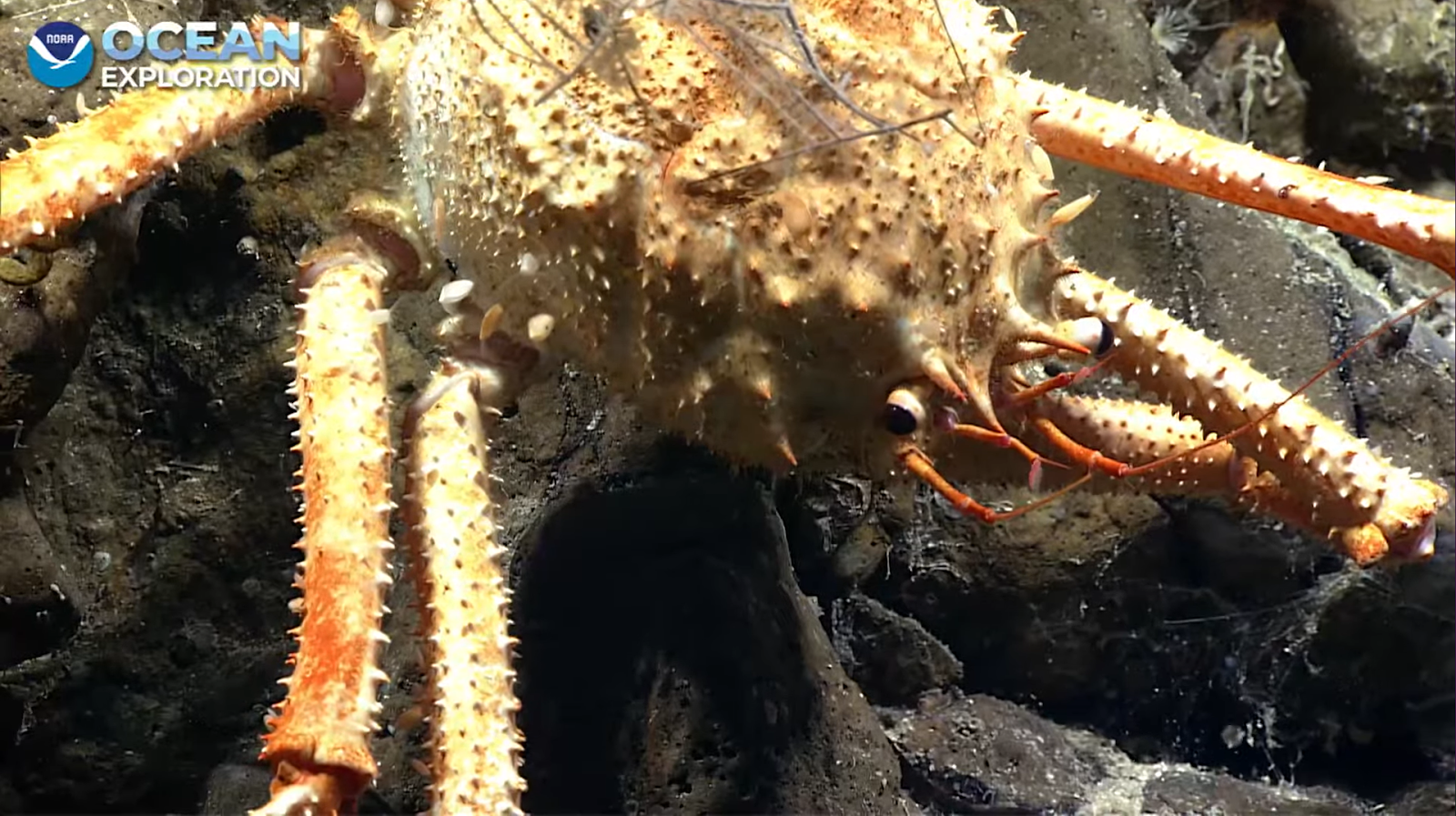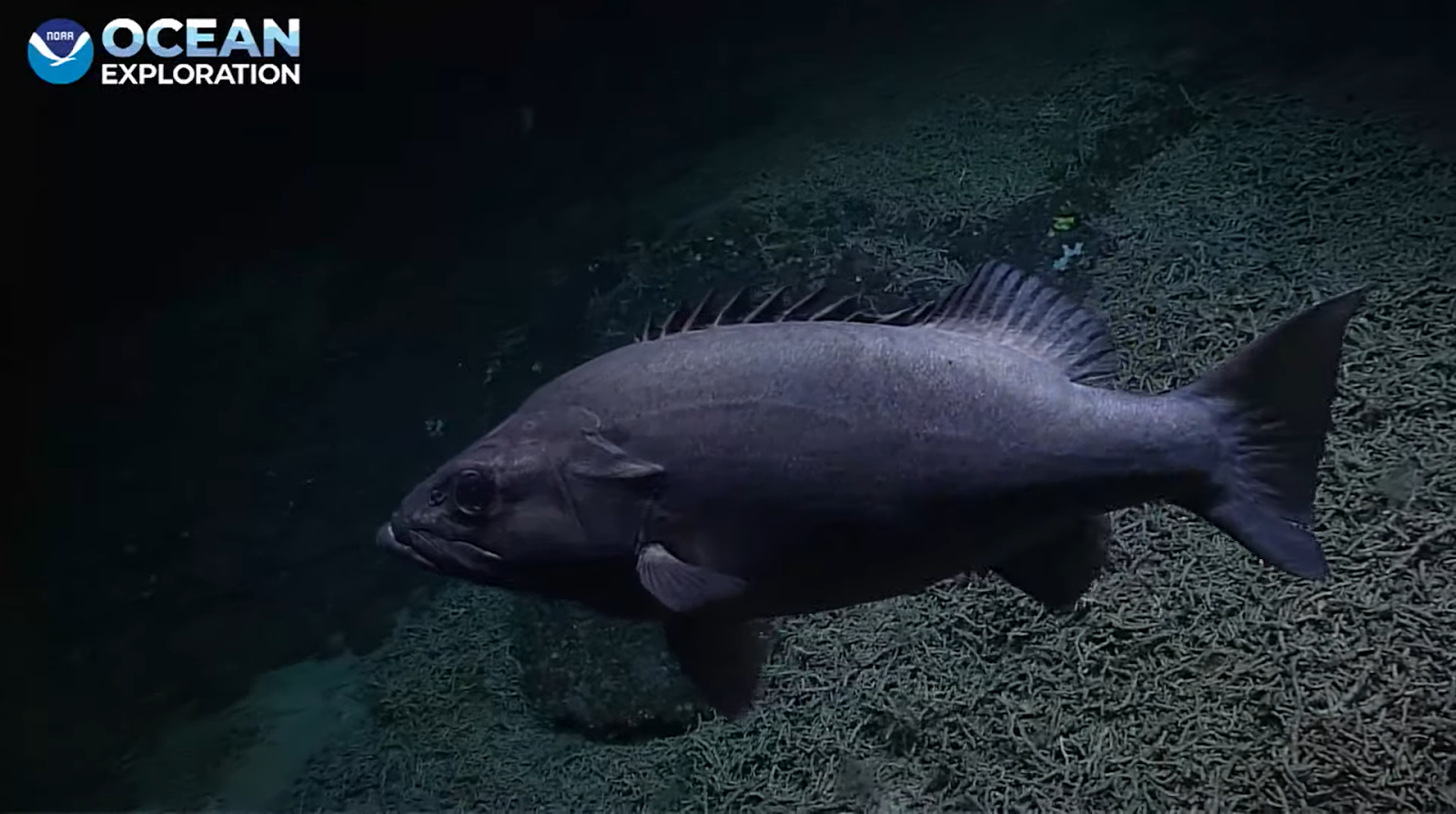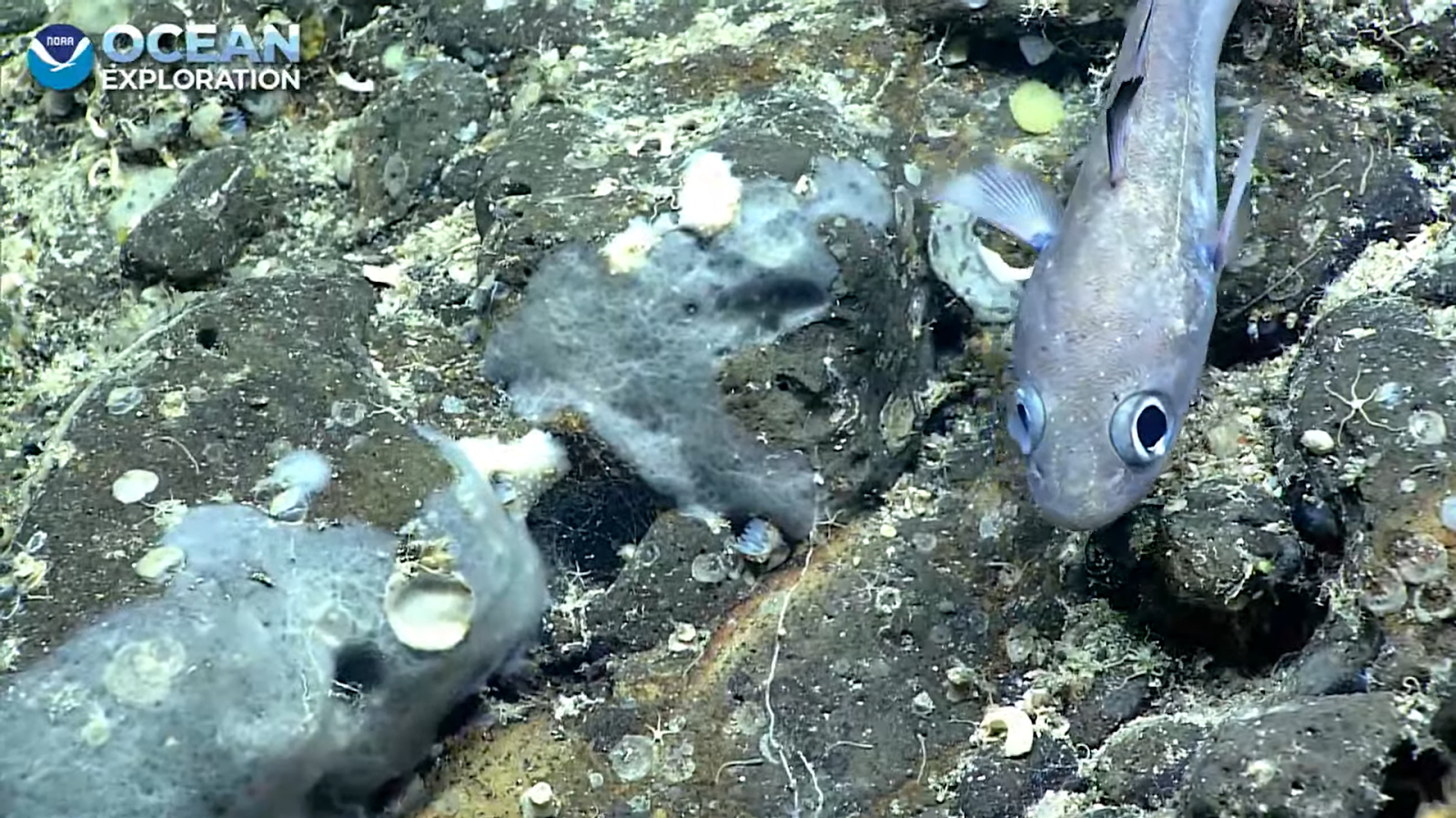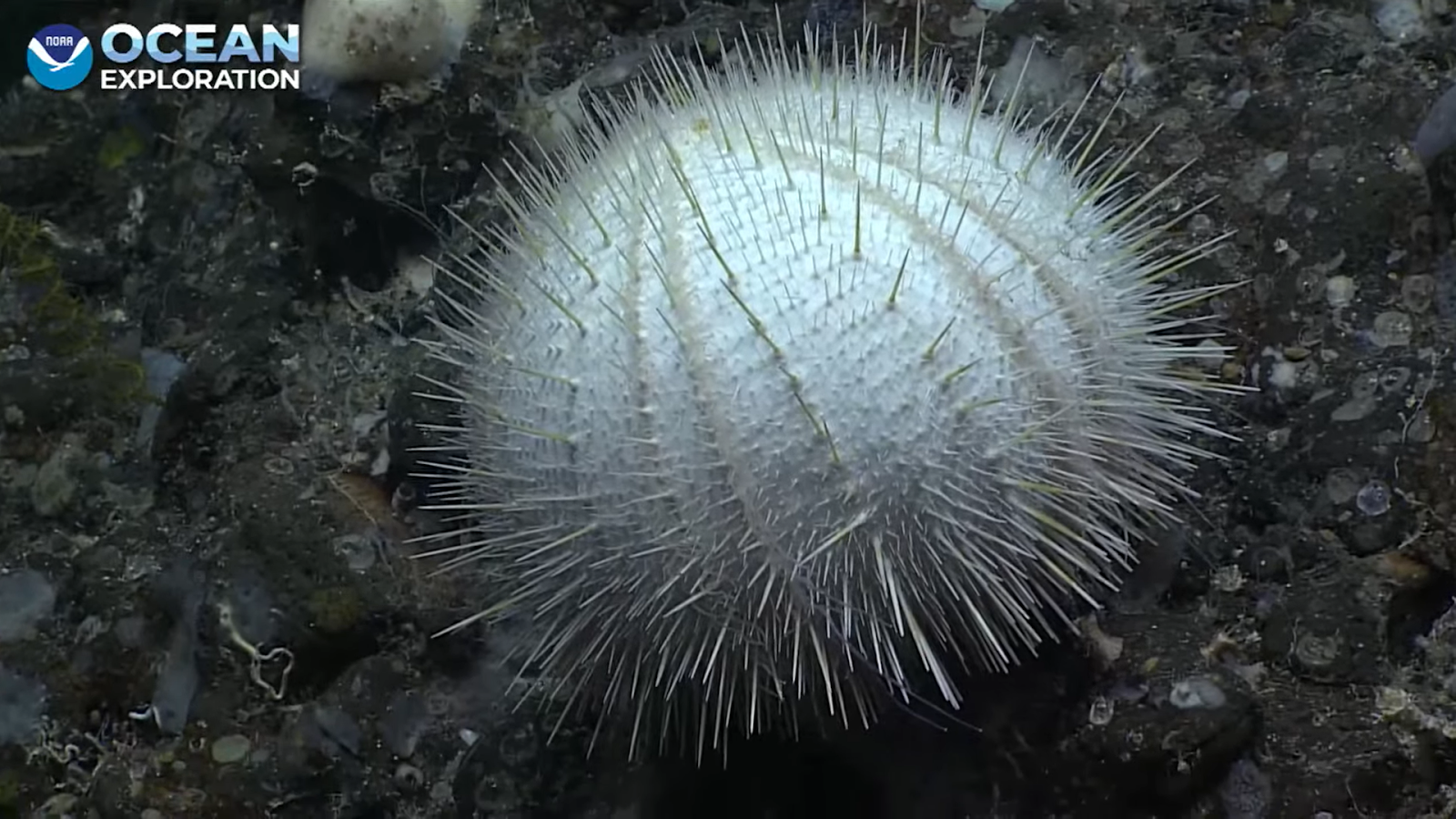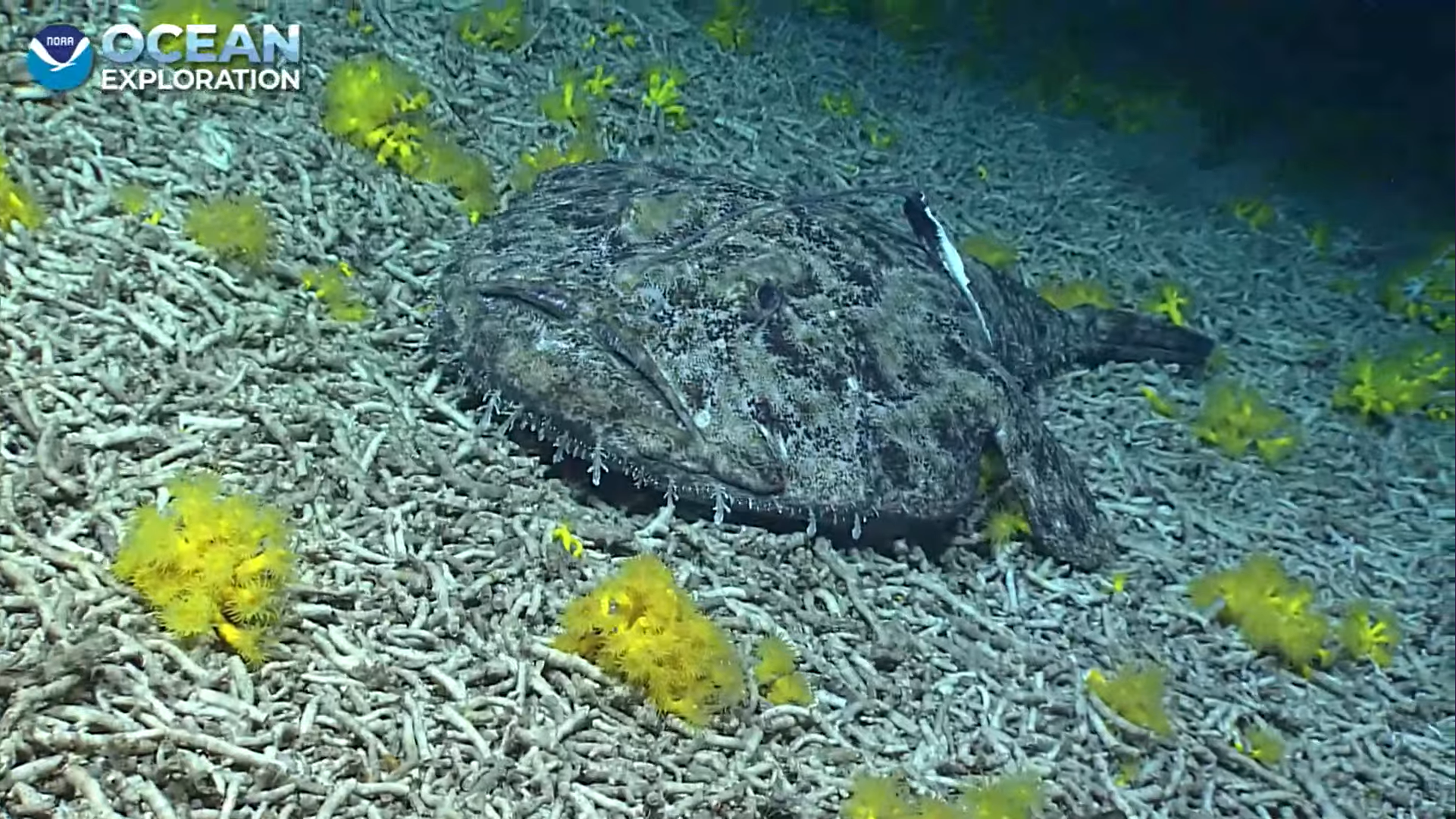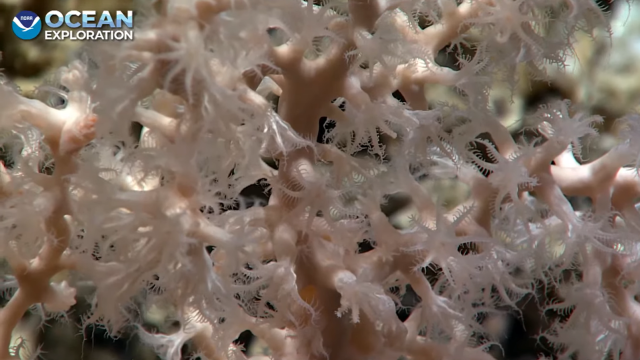An expedition to map and survey a little-understood region of the Atlantic Ocean is underway this week. Researchers from the National Oceanic and Atmospheric Administration and partner groups are sending a two-part, remotely operated vehicle (ROV) on a series of deep ocean dives as part of a mission called “Voyage to the Ridge 2022.”
The ROV carries sensors and cameras, and is recording everything it finds on the seafloor along sections of the Mid-Atlantic Ridge — one of the largest geological features on Earth. The best part: You can follow along, watching discovery occur in real-time via a set of livestreams on the NOAA website.
The footage so far, from the first of many planned dives, is already astounding, and more is set to come. Yesterday’s dive reached the seafloor around 9 p.m. AEST and wrapped up just past 4 a.m this morning (21 July). If all goes well, the current, overall expedition will continue through July 29, with dives streaming online daily from about 8:45 p.m. to 7 a.m. AEST.
Then, a follow-up expedition to a more southern section of the ridge has dives planned from August 7 to August 28. Each of those is expected to appear on the livestream too, while scientists, ROV pilots and others involved in the voyage provide live narration and explanation of what’s going on.
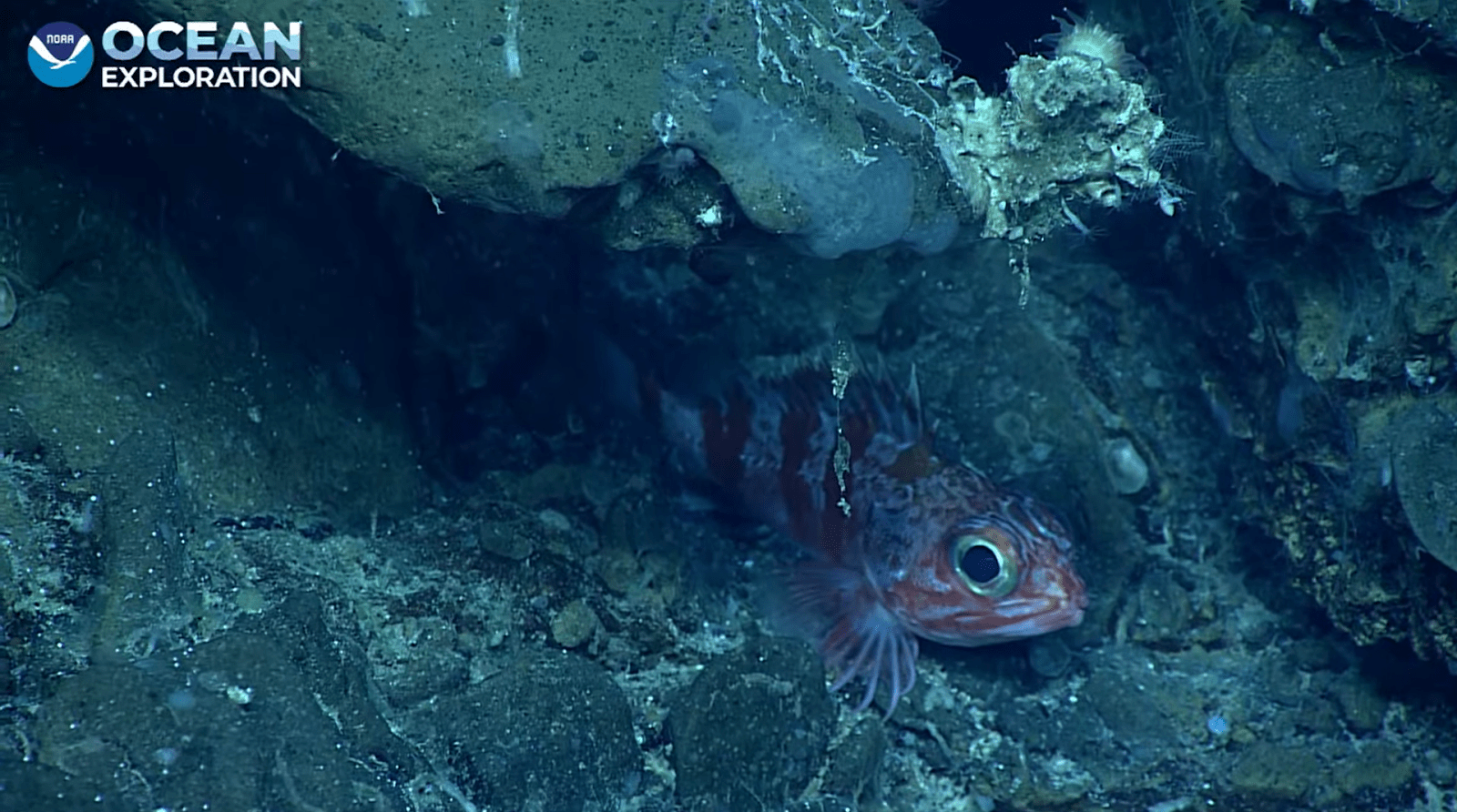
An unexplored frontier, closer to home
Earlier this month, the James Webb Space Telescope delivered the highest resolution images of our universe ever captured. The “final frontier” got a little less fuzzy and a little more fleshed out. But closer to home, lots of mysteries still remain. And in a way, the NOAA expedition might as well be taking place in a galaxy far, far away.
“Most of the deep sea is not explored. Most of it’s not even mapped at a reasonable resolution. It’s literally an unknown frontier on our own planet,” said NOAA oceanographer Derek Sowers in a video call with Gizmodo. “That merits all the excitement and sharing of discoveries that space exploration would [prompt],” he added.
Sowers spoke to me from the expedition ship, called the Okeanos Explorer. For this leg of the mission, he will be at sea for 21 continuous days as an expedition coordinator and voyage manager, along with the whole crew — collecting data and helping to shed light on the deep, dark seafloor.
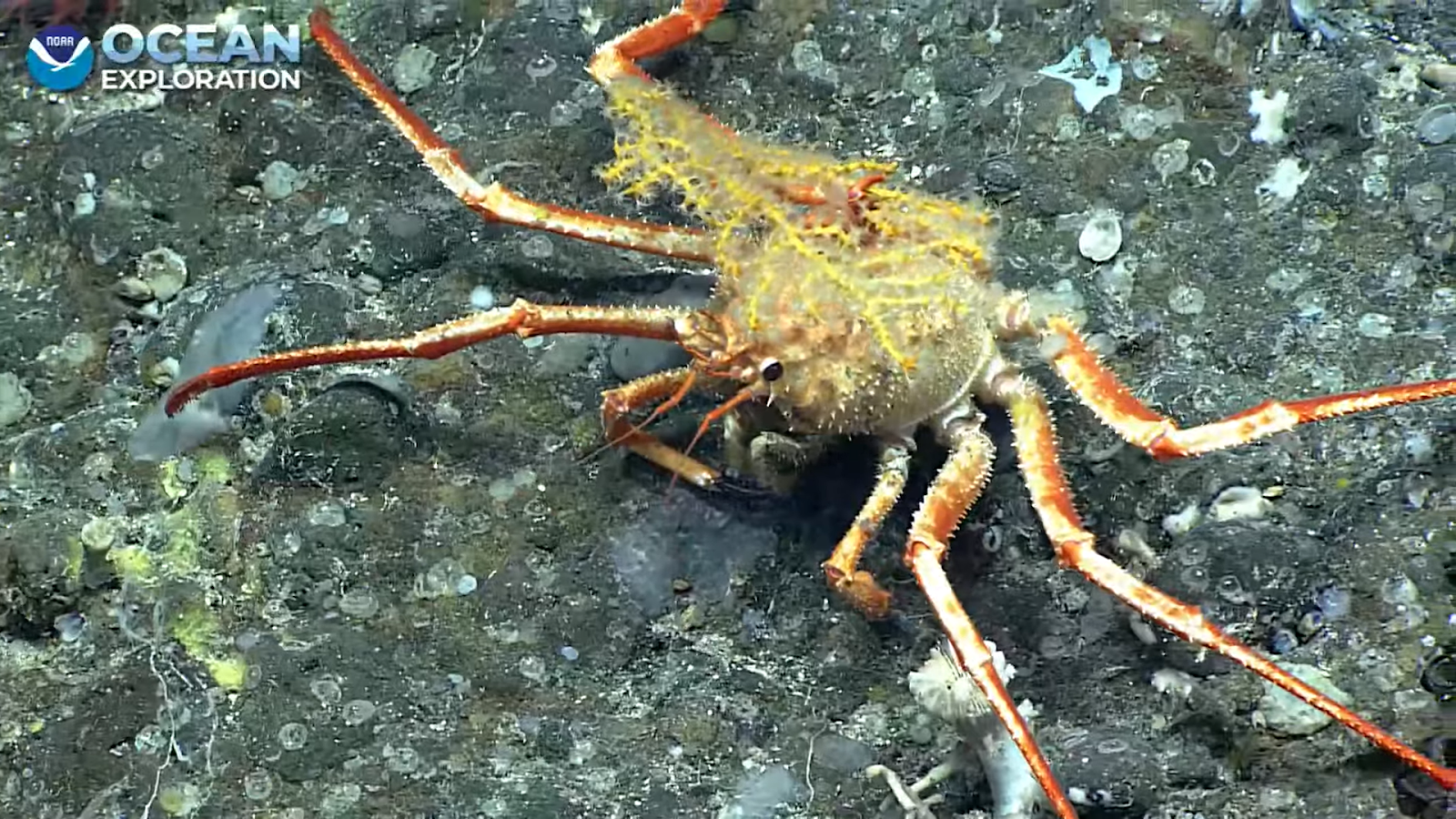
The ROV dives
In an earlier segment of the voyage, the ocean exploration team mapped a geologic hotspot known as the Charlie-Gibbs Fracture Zone. They didn’t deploy any ROV’s, instead they used a multi-beam system below the ship to create a detailed map of the landscape. But even without the cameras, the scientists still gleaned a new understanding of the region’s underlying geology, geography — and got a better picture of the type of life the area might support, said Sowers.
Yet he explained that the ROV dives are a particularly exciting opportunity and aspect of the mission. “Each one of these ROV dives is basically a very tiny window into the seafloor ecosystem,” Sowers said, and the deep ocean holds “a tremendous treasure trove of unknowns.”
The two-body ROV system is controlled by pilots from a control room aboard the ship. The command centre is full of large monitors displaying all of the camera views and data from the ROVs’ many sensors. The rover is manoeuvred via “a series of very high-end joysticks,” said Sowers. Pilots can also use a remote controlled, manipulator arm to reach out and collect samples to bring back up to the surface.
Today’s first dive focused on a large underwater mountain called a sea mount. The ROV began at a depth of about 850 metres and headed upslope, capturing footage of deep-sea corals, sponges, fish, sea stars, mollusks, and more along the way. “We’re all climbing this mountain together. We’re the first humans ever to see this,” said Scott France, a marine biologist at the University of Louisiana, while narrating the livestream. “So that’s pretty special,” he added. “Nobody’s been here before.”
Already, the researchers have spotted interesting geology and life forms, some of which they’ve been unable to identify on the spot. At least two different corals and a sponge have been collected by the ROV’s robotic arm for additional analysis. “Often we’ll find new species or new range extensions [of known species],” Sowers said.

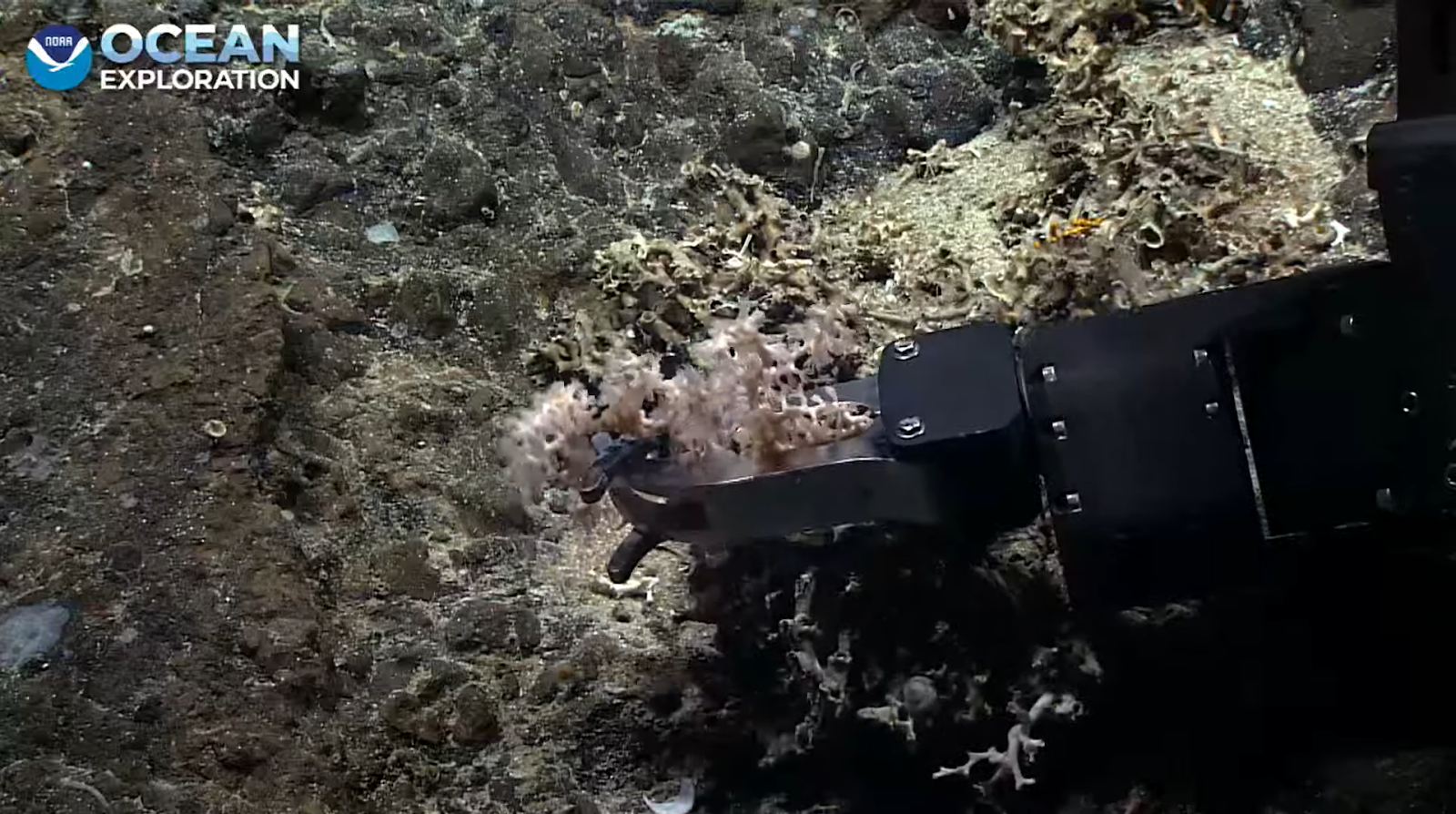
Later on in the expedition, the researchers will target the base of the same sea mount, sending the ROV thousands of meters farther down. At the deepest dive during the entire ridge voyage, the ROV is slated to travel up to 6,000 metres into the depths.
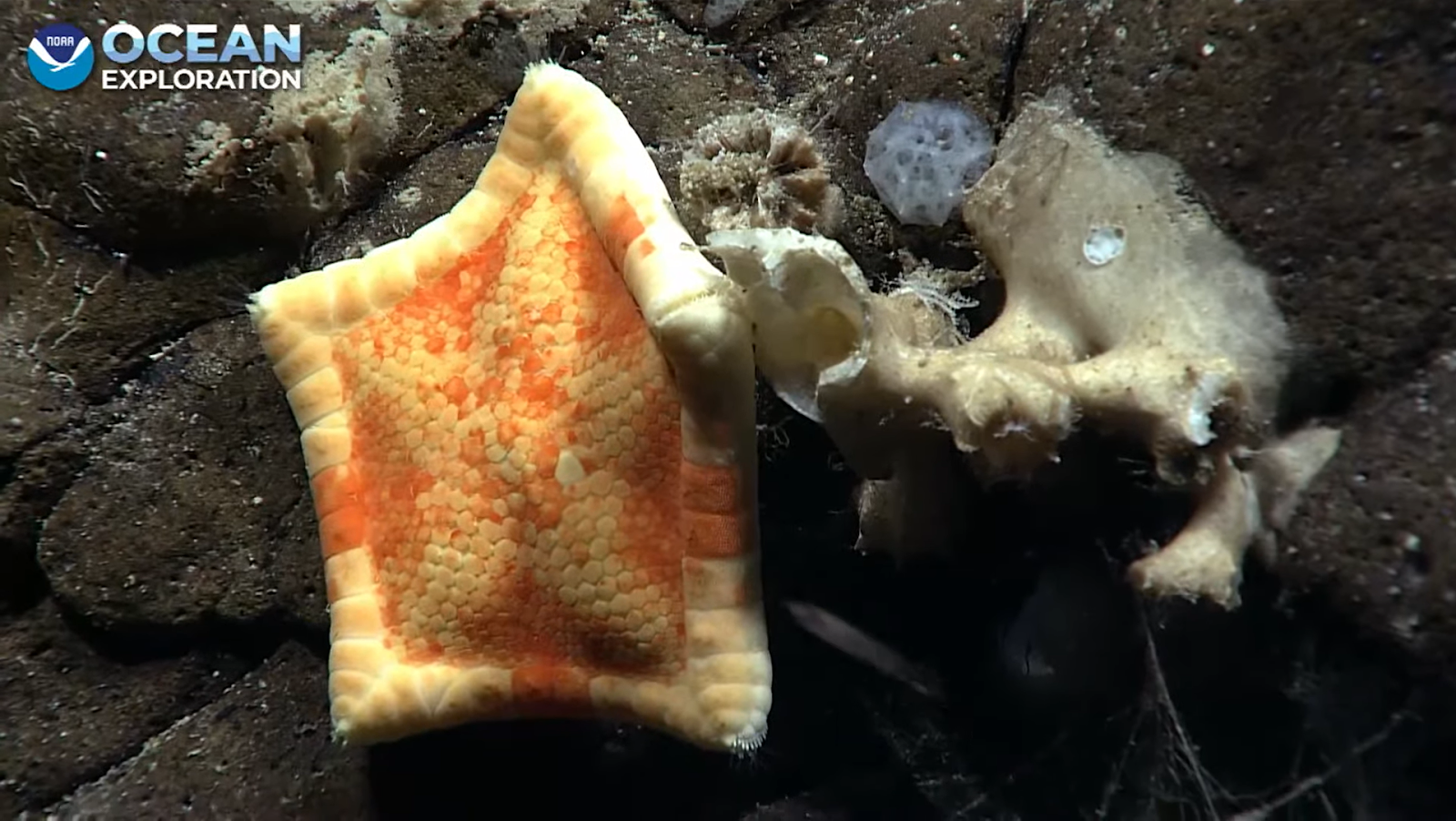
Understanding Earth and beyond
On top of the corals and sponges, there are other biological wonders in store. “One of the sites we’ll be visiting [later this week] is a vent site — a hydrothermal vent. Some of these areas support life that does not rely on sunlight,” said Sowers. Through observation of extreme environments like undersea hydrothermal vents, we’ve expanded our understanding of the conditions that make life possible, on Earth and beyond.
“It used to be thought that only living things that are ultimately derived from the sunlight can exist on Earth,” Sowers explained, but hydrothermal vents proved that idea incorrect. “And that’s kind of changed the paradigm of how we think life can exist in outer space,” he added. “From deep sea exploration, we gain some insights into the possibility of [extraterrestrial] life in the universe.”
Plus, of course, there’s the opportunity to get to know our own planet better. From its baseline geology to the interconnected biology. The Mid-Atlantic Ridge is where tectonic plates meet.
“This area we’re exploring is where new sea floor is actually made and pushing apart tectonic plates — so [it has] huge ramifications for understanding how planet earth works,” Sowers explained. “We’re still learning and trying to understand how ocean sea floor forms, and how these geologic processes work,” he said.
“On top of that geology, what is the biology that lives in all these variety of habitats that are created? We’re really trying to just get our first understanding of the biodiversity of the deep sea,” said Sowers.
